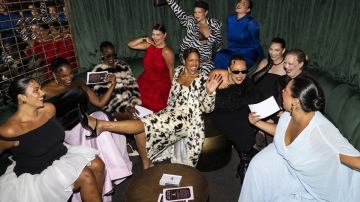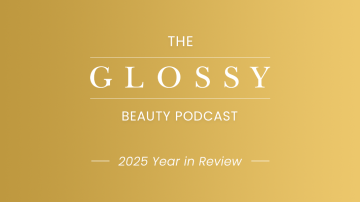Fashion Month Spring 2026 promised a creative reset. What emerged instead was a recalibration of power that firmly aligned luxury with the ultra-rich.
Rather than rethinking the runway or embracing new talent, the season’s major houses doubled down on exclusivity. Celebrities and billionaires replaced influencers in the front row. Archival reissues outpaced innovation on the runway. And the messaging was clear: Luxury brands are no longer trying to reach everyone. They’re designing for the few who can buy deeper, and at full price.
Nowhere was this more evident than in Paris. On October 6, Chanel debuted Matthieu Blazy’s first collection under a galaxy of lights at the Grand Palais. Lauren Sánchez and Jeff Bezos were seated front and center, alongside Kim Kardashian, Penélope Cruz and Kristen Stewart. At Balenciaga the day before, Pierpaolo Piccioli’s debut drew Meghan Markle, Anne Hathaway and, again, Sánchez. Dior, meanwhile, hosted Johnny Depp, Charlize Theron, and K-pop stars Jimin and Jisoo. Gucci skipped the runway entirely in Milan, opting instead for a cinematic screening attended by Demi Moore and Edward Norton.
“The aspirational middle class that once drove growth has been priced out,” said Christopher Morency, chief brand officer of Dogma and founder of Dot Dot Dot Partners. “What’s left are clients who buy deeper at the top. Those that buy cheaper must shop at the edges — through beauty, resale or collabs.”
That realignment showed up in who brands choose to represent them. “The mega-influencer is definitely not what the brands are picking up this season,” said Emilie Meinadier, founder of EMC Paris consultancy. “It was a more conservative Fashion Week in terms of front row. Some of my [influencer] clients felt the shift, but for brands, it’s a fresh start.”
Lauren Sánchez’s appearance at multiple shows, as Philipp Plein’s strategy of courting new money seemed to catch on. “There’s a growing embrace of what used to be looked down on,” said Morency. “The industry is catching up to what Plein understood all along: You should design for who’s actually buying.”
Robin Mellery-Pratt, founding partner of brand intelligence firm Matter, said the intention was clear. “The most important objective for luxury brands this season was to justify why they’re still synonymous with luxury,” he said. “Since post-pandemic savings ran out, and brand overexposure was felt by the 1%, luxury has been sliding toward a relevance crisis.”
What the 1% wants, Mellery-Pratt said, is “extreme clienteling and limited product runs.” This Fashion Month, brands catered to this demand with couture-level craftsmanship and show formats designed for intimate, VIP-only experiences.
Chanel’s Spring 2026 collection, while praised for Blazy’s refined vision, leaned on crisp shirting and embellished coats drawn directly from Coco’s menswear roots. Balenciaga reissued Demna-era staples like the logo bomber and hourglass jacket. Dior focused on its classic Bar jacket and sheer silhouettes.
Across all three brands, archival codes outshone new silhouettes. “This renewed emphasis on ready-to-wear, alongside the continued strength of accessories, mirrors what we see resonating in store,” said Simon Longland, director of buying, fashion at Harrods. At Harrods, where the bulk of the client base is the wealthy 1%, according to earnings information from Harrods, new flagship spaces for many maisons are launching, including Tom Ford womenswear.
“Brands are relying more on reliability,” said Morency. “That’s why they’re going back to old hits. It’s not about innovation — it’s about making people feel safe in their purchases.”
Both experts agreed that catering to the 1% may protect brand prestige but risks eroding cultural relevance. “We’ve stopped pretending fashion is inclusive,” said Morency. “There’s a new honesty about designing for the ultra-rich.”
This approach may be reassuring for wealthy clients, but it also exposes a missed opportunity. While brands doubled down on exclusivity and legacy, younger audiences and aspiring fashion fans still showed up, just not always where brands were looking.
The brands saw nice traction on social media, with a main source of interest from the wider consumer base. Chanel’s show reached 27.7 million views on Instagram, while Balenciaga drew 31.4 million.
But some of those biggest wins in Paris came from moments that weren’t planned by brands. At the Lyas Watch Party, a group of 2,000 fashion students watched the Paris shows live, voting Blazy’s Chanel debut as the season’s best. “That was a real cultural moment,” said Morency. “Brands could have done it themselves, but they didn’t. They’ll sponsor it next time, but it won’t feel the same.”
“That was probably the most interesting thing to happen all week,” said Morency. “You had students debating looks in real time. That’s more authentic engagement than most brands get on their own channels.” Speaking about the watch party, Mellery Pratt added: “But as ever, it is impossible to treat the industry as a monolith, everything comes down to idiosyncratic execution, relevant to brand authority.”
The “Virgil Abloh: The Codes” exhibition at the Grand Palais happening during Paris Fashion Week also offered a contrast. Featuring more than 1,000 items from the late designer’s archive, it reminded the industry what fashion can be when built on ideas rather than income brackets. “It was a better cultural contribution than most runway shows,” said Morency.
Despite the craftsmanship and showmanship, few insiders left Paris feeling like the system had changed. “We have great designers like Anderson, Blazy and Piccioli,” Morency said. “But no one is redefining anything. This isn’t a reset. It’s preservation.”




